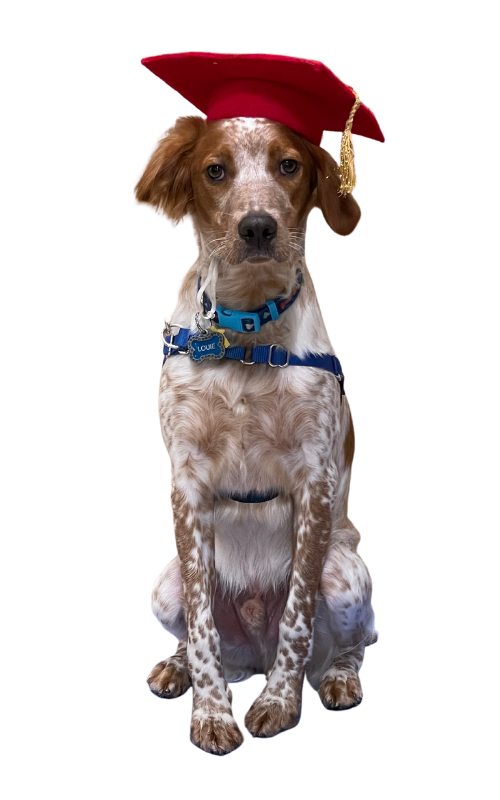Choosing a Trainer. The first, and most important secret, is choosing the right dog trainer. You want to be comfortable with their training methods. At Pawsitive Dog Training (PDT), we only use positive reinforcement. Your dog will never be forced into a position, yanked by the leash, yelled at or shocked into submission. Positive reinforcement fosters a loving relationship with you and your pet. Your dog will work for you because he loves and respects you, first and foremost.
Your trainer should also be able to communicate well with both you and your dog. Your trainer is training you how to interact with your dog. Make sure that your interaction is comfortable and that the trainer answers questions using language you understand (not fancy jargon). You should be enjoying the process, having fun while learning to increase your vocabulary with your dog. Behavior problems should be addressed directly and effectively; if you find that you are not getting results, the trainer should be willing to show you alternative ways for teaching your dog based on your goals.
Consistency. After you’ve found the ideal trainer, you must implement the skills learned on a consistent basis. Practice daily, ideally in short sessions. At PDT, we recommend 10-15 minute daily sessions so that your dog doesn’t get bored with the process. Make sure you use your cue word (i.e., “Come”) and that everyone uses this same word. Having one person yell “Come” while another family member uses “Here Boy” doesn’t help get a consistent result, but leads to confusion.
Also be consistent with expecting and rewarding the same end result from your dog. If you ask him to “Down” and start rewarding him when he’s hovering, but not all the way down, you will get a dog who only crouches. He thinks that close is good enough. You must wait for the dog to lay down completely each and every time before you reward him for completing the job.
Attitude. Training should be a fun process for both you and your dog. You need to remain calm and in control, even if your puppy is distracted, excited or just “not getting it.” Focus on the training, remove distractions, put your dog on leash, and praise/treat for good behavior. If you are stressed, anxious, upset, in a hurry, etc. your dog will sense this and training will become a chore. You should focus on the training goals and if you can’t, you may want to evaluate your training schedule and pick a time which is better for you both. If you get frustrated with your puppy, you are only setting yourself (and him) up for failure.
If you find you are struggling, it would be better to take a break and come back later. However, you should always end your session on a good note. The last cue you give the puppy should be completed with success. If you’ve had difficulty during the training session, go back to an easy command such as “Watch Me.” At PDT, we teach this as one of the first cues so that we can get our dog’s attention. This way, when your dog does it correctly, you can end the session with praise and treats and release him for “recess” or a nap. Our dogs desire to please us, so this sets him up for success for the next session.
Ultimately, if you feel that you don’t have the patience or time to train your dog successfully, PDT offers Board and Train programs where we train your dog for you. This is appealing to some owners who want their dog to spend time learning and practicing with a professional. We aim to please all of our clients, and can modify our programs as necessary.
We’re Pawsitive we can help you!


